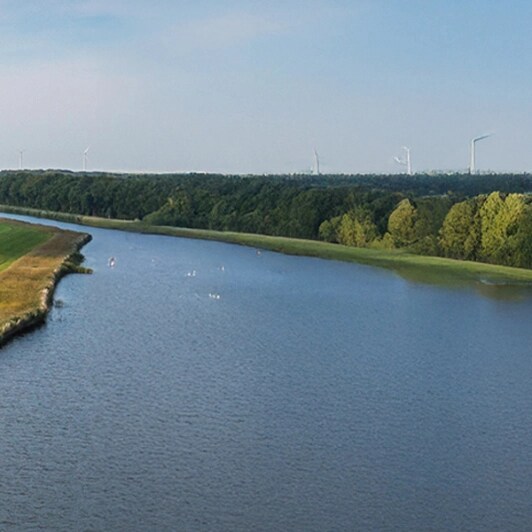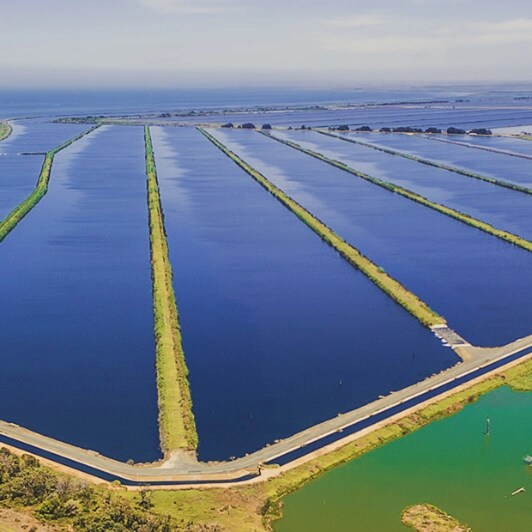Published: Oct 29, 2025
Digital resilience and AI: Turning information into intelligence
Part 2 – Water intelligence: An NCS whitepaper
The water sector is data-rich but insight-poor. SCADA systems, IoT sensors, billing platforms, and customer channels generate terabytes of data every day, yet much of it remains siloed, underutilised, or untapped. Artificial intelligence changes this equation by transforming raw data into actionable intelligence that drives efficiency, resilience, sustainability, and improved customer outcomes.
In this part of our white paper, Lasath Kahingala, NCS Australia’s Data & AI Consulting National Lead, shares his insights about transforming information into intelligence with data and AI.
The maturity curve
Utilities’ use of AI typically progresses through four stages:
- Foundational: consolidating and governing data.
- Descriptive: visualising “what happened” through dashboards.
- Predictive: using machine learning to forecast “what could happen.”
- Prescriptive/autonomous: enabling AI to recommend or initiate actions.
Most Australian utilities sit between descriptive and predictive stages, with pilots underway in asset maintenance, water quality monitoring, and demand forecasting. The convergence of generative AI and digital twins points toward a future where end-to-end process re-imagination delivers outcomes well beyond productivity gains, including resilience, sustainability, and entirely new ways of operating.
Opportunities across the value chain
AI presents opportunities at every stage of the water lifecycle:
- Catchment management – satellite imagery and AI to monitor land use and runoff risks.
- Treatment plants – predictive dosing to optimise chemicals and reduce energy use.
- Distribution networks – early leak detection and predictive demand balancing.
- Customer service – generative AI to deliver personalised recommendations, proactive engagement, and 24/7 support.
- Incident management – real time immersive technology to improve operation centres’ efficiency through a unified platform.
- Regulation and compliance – automated reporting and monitoring to ensure assurance at scale.
Emerging possibilities
Beyond current pilots, AI unlocks transformative potential across five key domains:
- AI-driven operational efficiency – predictive analytics and IoT-enabled monitoring reduce unplanned downtime, optimise pumping and energy, and detect leaks or quality deviations early.
- Resilient and adaptive systems – scenario modelling and digital twins simulate droughts, floods, and contamination, enabling proactive planning and climate-resilient infrastructure.
- Enhanced customer engagement – predictive insights support proactive service alerts, leak notifications, and tailored sustainability advice, supported by AI-enabled chatbots and self-service tools.
- Sustainability and circular economy leadership – AI tracks ESG metrics, optimises reuse, and enables recovery of energy and nutrients from waste streams, positioning utilities as leaders in the circular economy.
- Innovation and new business models – AI creates opportunities for “water-as-a-service,” dynamic pricing via smart meters, and monetisation of predictive insights for partners such as insurers and urban planners.
Overcoming barriers
Adoption is not without its challenges. Fragmented legacy systems, inconsistent data quality, and limited in-house capability often slow progress. Overcoming these challenges requires strong data foundations; targeted workforce upskilling; and a culture that encourages innovation, while managing risk. A holistic approach is critical for utilities to experiment confidently, scale responsibly, and deliver sustainable value – especially in a sector where infrastructure is critical to every citizen.
The road ahead
As utilities progress along the maturity curve, AI will shift from being an add-on capability to becoming core business DNA. Future operations will see AI guiding crews, optimising energy use, balancing demand in real time, and ensuring seamless customer interactions. Over time, AI will be as fundamental to utilities as pumps and pipes – an embedded capability powering smarter, more resilient critical infrastructure, and more sustainable water services.
At NCS, we bring the experience that shows we can support our clients with navigating digital transformation and change, regardless of where clients are on their journey with digital resilience and adopting AI. As one example, we previously supported a national agency with a successful risk assessment to determine the cyber security posture of its critical information infrastructure.








